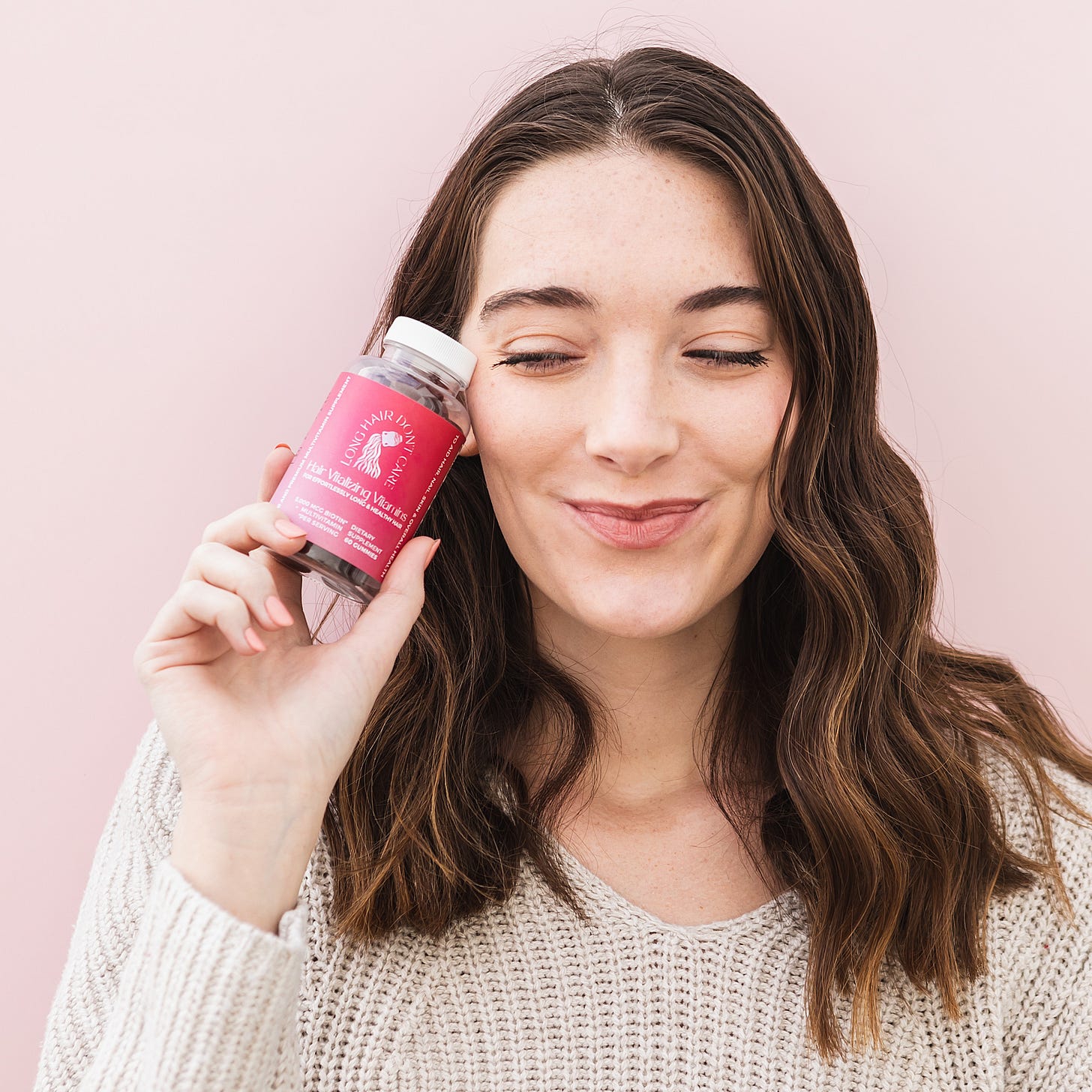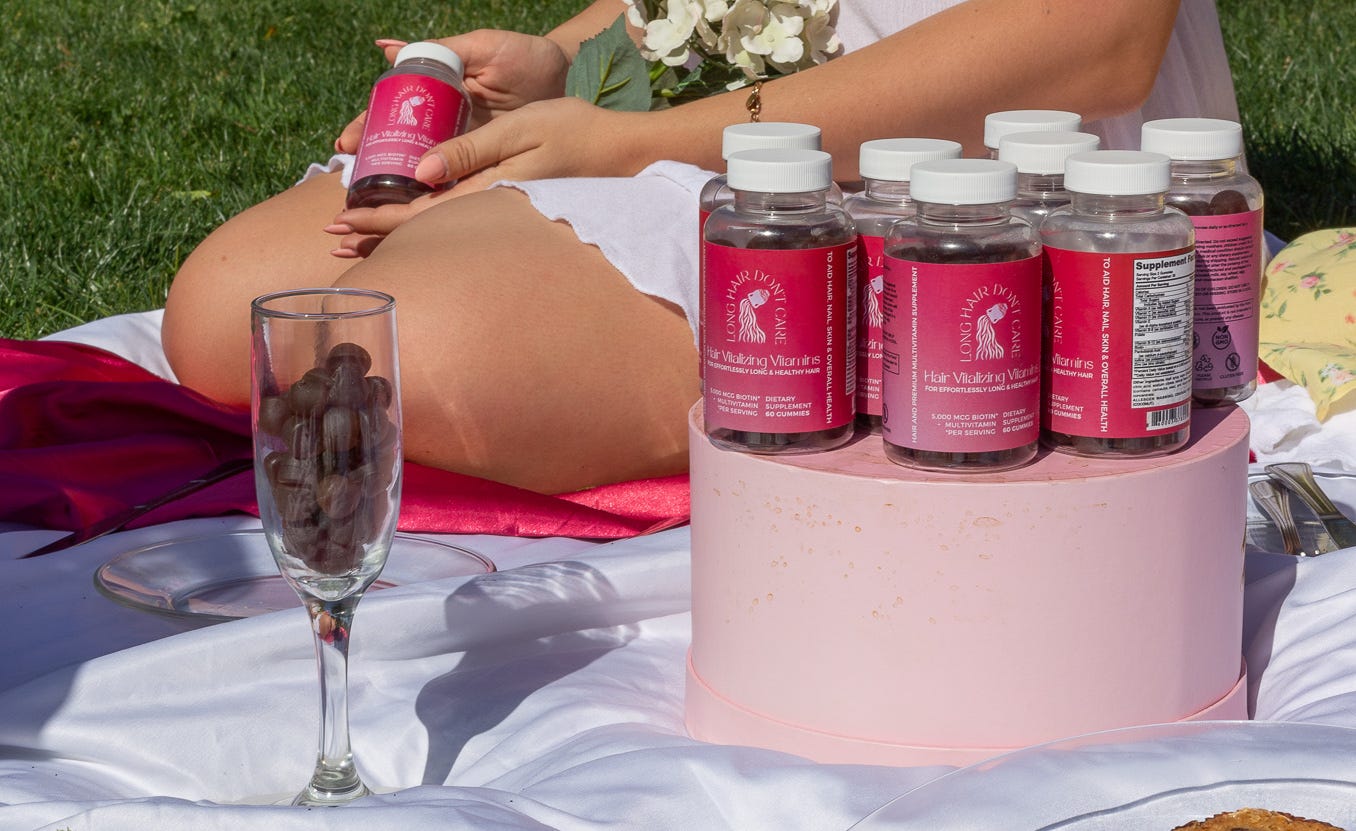A Lesson in Failure, Failing at a Consumer Brand.
This is what we learned creating, running and now closing our hair supplement company, Long Hair Don't Care.
What was Long Hair Don’t Care
From the start, our goal for this brand was to deliver a real product that was able to provide customers value at a price that did not break the bank and can be seen as a value. We had a vision for a brand that would focus on items such as Hair Vitamins, Shampoos, Conditioners, Soaps, and more. We wanted to offer a bunch of products that customers could subscribe to, products that were healthy, natural, well-priced and so good that we would use them ourselves. For everyone involved, this was the first time selling a physical product, selling through e-commerce, running a large marketing campaign, hiring photographers, graphic designers and content writers. This was a lot to learn, and many rapid iterations were made in a short amount of time; most motivating of all, it was on our dime.
Chapter 1: Creating
This was a 0 to 1 project (built from scratch), and we had so much to learn.
We knew that we wanted a physical product, and we wanted to deliver a product under $20 per unit. We felt that a cheaper product would be easier to convince a customer to purchase rather than a more expensive product.
After listing out 100s of products, we started narrowing down on products that were consumable and would need to be ordered every so often, were not very heavy and thus could be shipped around the USA fast and cheaply, and a product that we believed we could differentiate ourselves from the competition with.
We then picked a name and had a graphic designer assemble a logo, color palette, graphics, and a content writer for marketing content.
Created a New York State LLC.
We ordered samples from various manufacturers across the USA and started testing them among friends and family, from which we collected valuable feedback.
The big one, we ordered a couple thousand units, large enough to get the product at a reasonable price and handle the number of sales we envisioned, that we thought we would get. (BIG MISTAKE)
We built our e-commerce website and created a listing on ETSY.
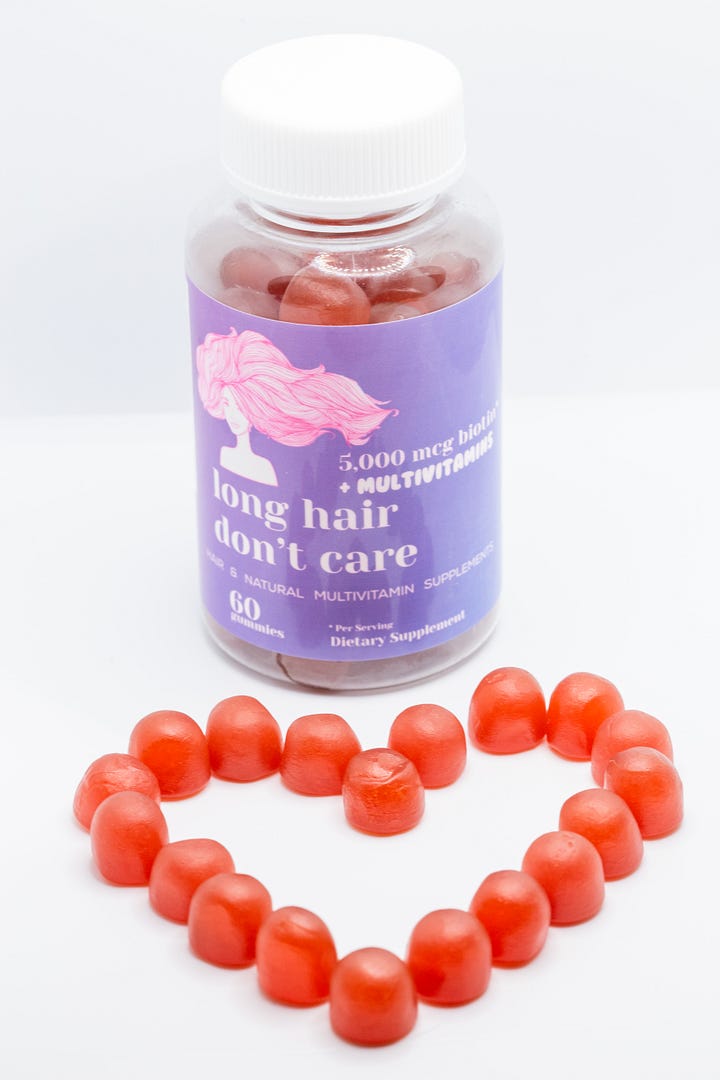
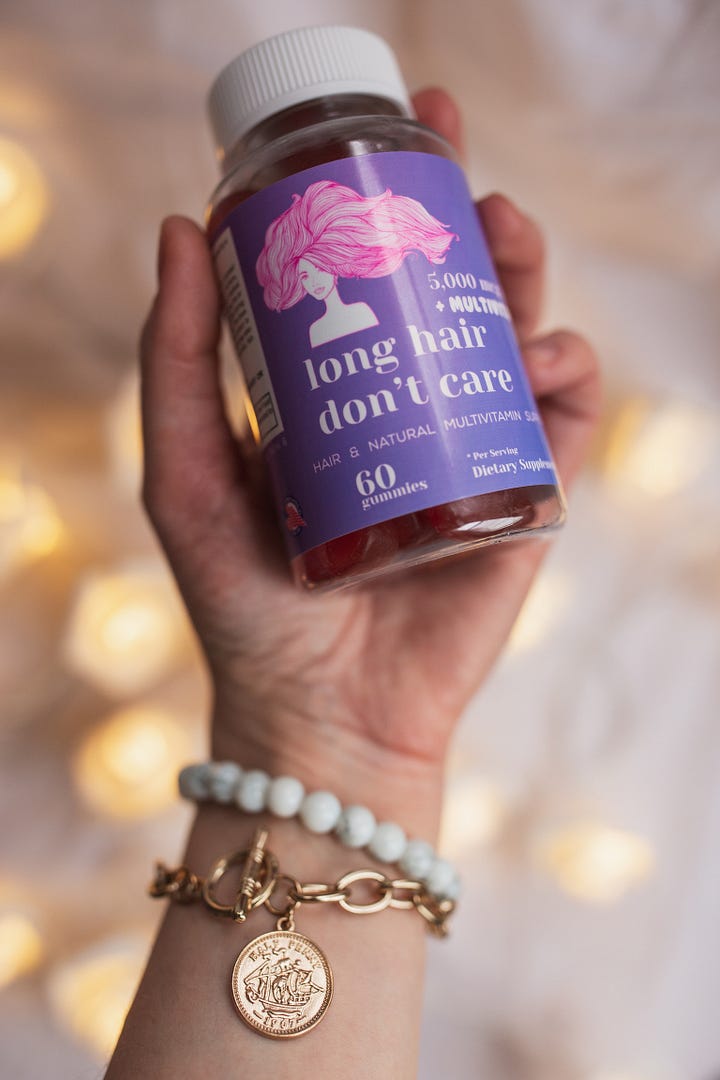

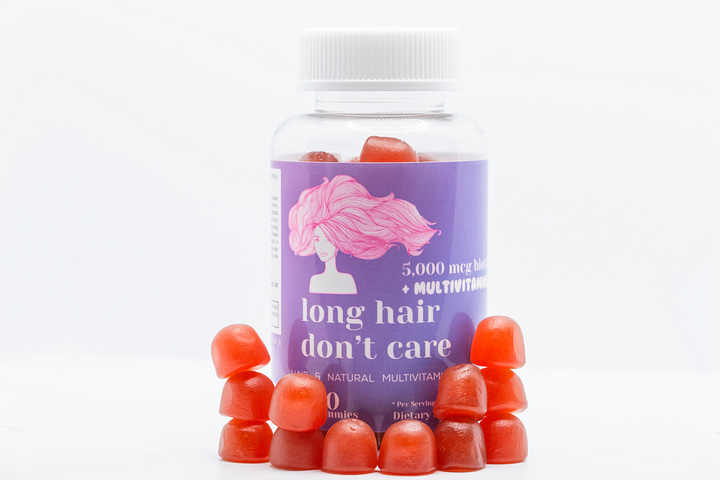
Chapter 2: Getting our First Sales
Getting our first sale on ETSY was magic. A person on the internet decided that a product that we sold was interesting enough to buy, to spend their own money on. Thinking about it even now I find it so crazy.
Our first sale on ETSY turned into 10s of sales on ETSY, which allowed us to show Amazon we were legit and able to sell under their supplements category.
At this point, we were on cloud nine and decided the only logical step was to start advertising on Facebook, now META. (OUR NEXT BIG MISTAKE)
At this point, we had sales from ETSY, our website, and Amazon. With advertising on ETSY, Facebook, Google, Pinterest and Amazon. (MISTAKE)
Chapter 3: Growth
We hit 100 sales a month, and every day, more than two people, on average, decided that our product was valuable. Not only that, but they were returning and repurchasing at over 70% month to month.
We were very impressed, but we were not making money, with our marketing budget stretched thin across multiple platforms we did not stand a chance. With so many simultaneous marketing attempts happening at once, we were never able to focus on one, get the data, and iterate.
With all of this working against us, our sales were growing, and we had brought our breakeven cost down to 2 units per customer. We were starting to return a profit.
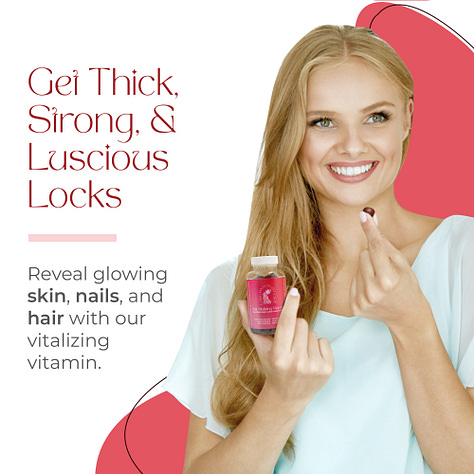
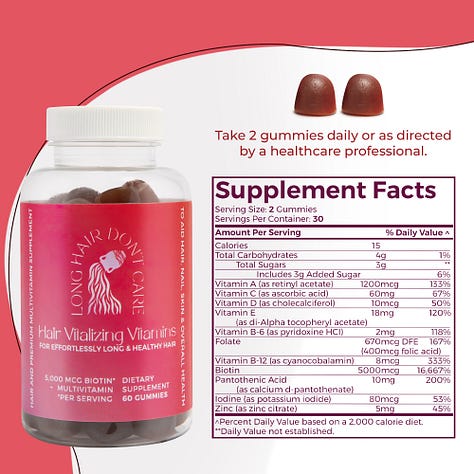



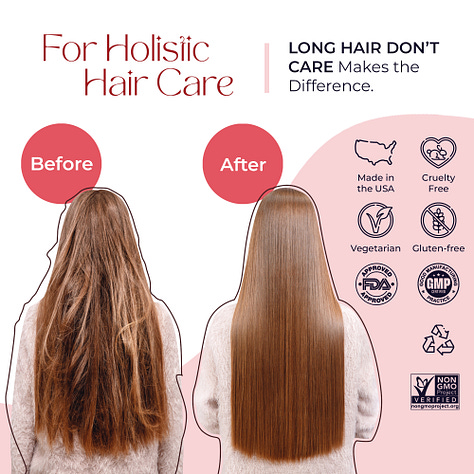

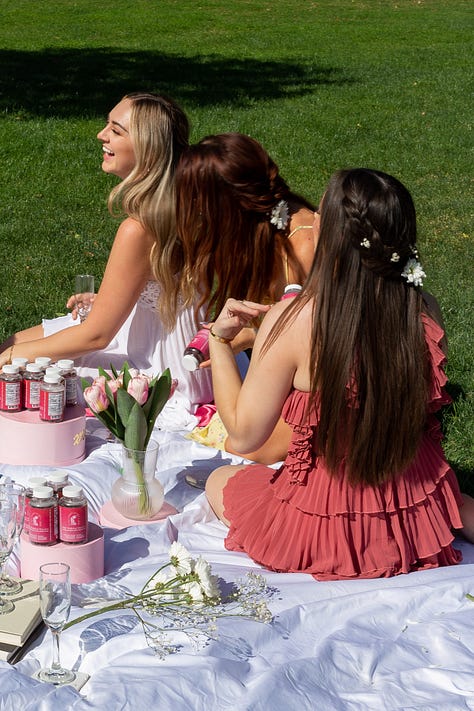
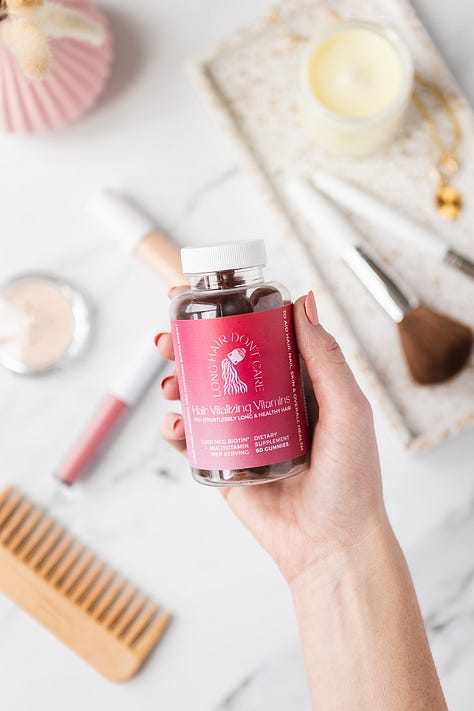
Hair Vitamins
Chapter 4: Marketing & Doubling Down
With sales increasing and costs under control we decided to double down, what we thought was obvious to us was that we were not strong in marketing and thus the only solution would be to throw money at it. Which meant time to hire marketing.
Wanting to also increase traffic to our website and provide our customers with further value we started a weekly blog, filled with hair care tips, style ideas and more.
We hired a professional team to handle our marketing on Instagram and TikTok, which ended up being expensive.
After some months we parted ways with the marketing team. We think we were the reason for many of the failures but ultimately it came down to these; we never figured out our target customer, we entered a saturated market in terms of product and marketing tactics and we never mastered our business to a certain level before outsourcing parts of our selling infrastructure.
Chapter 5: Slow Death
At this point, we had shrunk our marketing budget down to nearly zero and were riding mostly subscription sales on Amazon and our website.
Ultimately we sold out the current stock this January and were making a significant profit per sale.
Being that we had no plan for future marketing or releasing new products, we decided when we sold out that our capital would be more useful spent elsewhere in higher growth ventures rather than tied up here.
At this point, Long Hair Don’t Care was a failure, and we decided to move our capital elsewhere. We ended up walking away close to breaking even.
Conclusion: What we learned
Ultimately a failure, Long Hair Don’t Care was a true masterclass for starting, running, and closing a business. This will allow us to gain experience in every part of a business and teach us what to do better next time. AND yes, there will be a next time, a pivot, and another idea. Ideas are a dime a dozen, and this experience got us closer to our eventual success. Here are some core lessons that we will take with us;
When picking a new product make sure it is either a completely new market or at least a 10 times improvement than what exists.
Before outsourcing marketing you must have a clear understanding of your consumer and have at least some form of marketing funnel created in-house.
When working on paid marketing focus on one platform at a time, especially with a limited budget.
Before building the product get proof of demand, which could be email signups or survey data.
Make sure it is an idea that interests you.
Who We Worked on This Project With:
We had a great experience with those we worked with and hope to work with them on future projects;
Casey Morris | Brand Designer | callbackdesign.com
Anna Panutsa | Photographer | annapanutsaportraits.com
Amaya Damme | Marketing & Photography | obtainingsocial.com
Deidre Schlabs | Product Photography | fluffmedia.com
Ashly Brook | Marketing | @theashlybrook
Laura Allen | Content Writer
If you have any questions or comments my email is thomasmjumper@gmail.com




